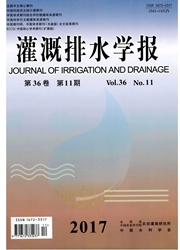

 中文摘要:
中文摘要:
在第二次土壤普查基础上,于2006年5—6月对不同水热梯度下封丘、临泽和阜康3个地区农田土壤速效钾含量进行全面调查,分析不同地区农田土壤速效钾的时间变异特征。研究结果表明,影响不同水热梯度带农田土壤钾素含量水平和近20多年来变化程度的主要因素是成土母质和耕作管理水平;耕层土壤速效钾平均含量以阜康地区最高、封丘地区其次、临泽地区最低;自东向西土壤速效钾含量的变化与水热梯度差异未呈现显著相关性;经过20多年的耕作种植,3个研究区耕层土壤速效钾含量普遍下降,临泽地区降低幅度最大(50.08%),其次为封丘(39.11%)和阜康(27.40%);利用地统计学方法对3个地区土壤速效钾含量进行空间结构分析,结果表明,封丘和临泽地区土壤速效钾主要受结构性因素影响而呈强空间相关性,阜康地区速效钾受结构性和随机性因素共同作用而呈中等空间相关性。
 英文摘要:
英文摘要:
Based on the second national soil investigation in 1980,farmland soils along gradients of precipitation and temperature in China,including Fengqiu,Linze and Fukang county,were surveyed during May ~ July 2006,and the temporal-spatial variability of soil available potassium(AK) was studied.The results indicated that the differences of soil-forming parent material and cultivation management level in different regions were major reasons for the otherness of soil AK contents and its changing degree from 1980 to 2006.The average contents of soil AK were different among three regions in 1980 as well as in 2006,that the highest AK content was in Fukang and the lowest in Linze.There was no significant relationship between the average soil AK content and the precipitation and temperature gradients.After more than 20 years of planting and farming,the average contents of soil AK decreased by 50.08% in Linze,39.11% in Fengqiu and 27.40% in Fukang.The spatial correlation of the average soil AK contents in different regions was studied by geo-statistical analysis.The results showed that the soil AK exhibited a strong spatial autocorrelation in Fengqiu and Linze affected by structural factors,and exhibited a moderate spatial correlation in Fukang jointly affected by structural and random factors.
 同期刊论文项目
同期刊论文项目
 同项目期刊论文
同项目期刊论文
 期刊信息
期刊信息
